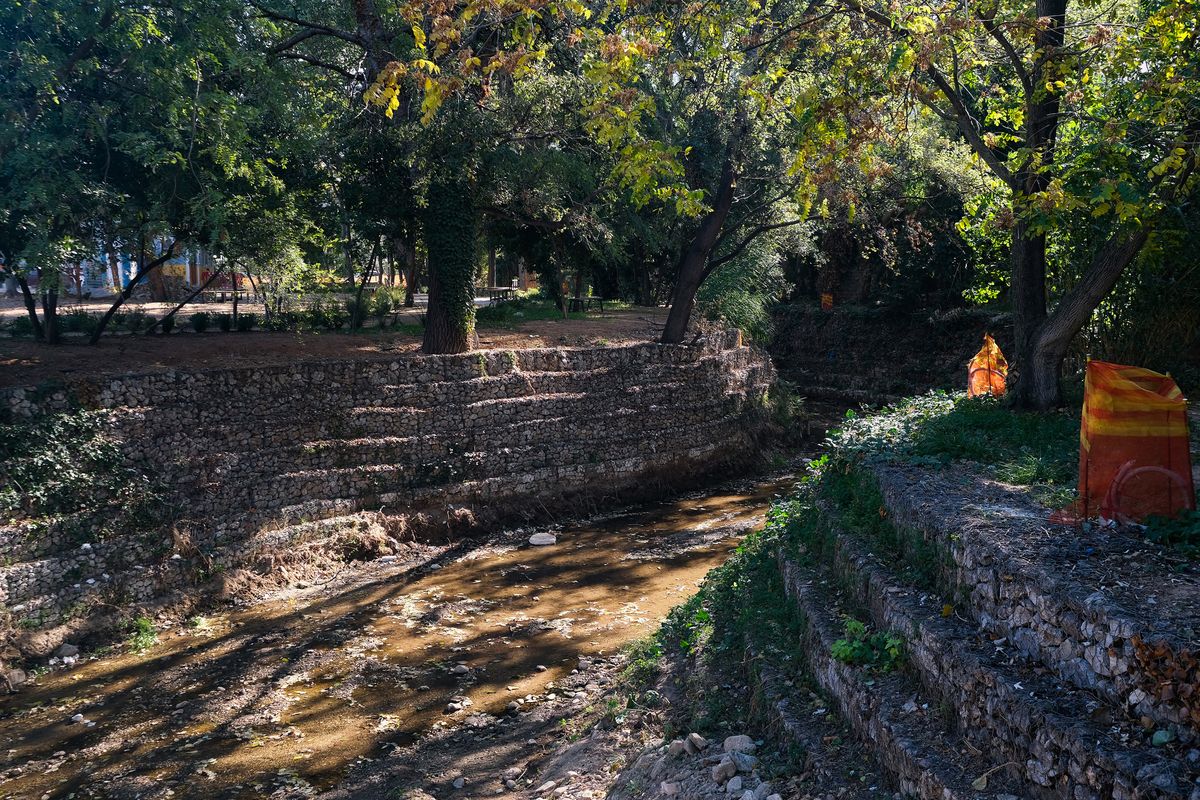Athens’ new answer to a water supply crunch: an ancient aqueduct

ATHENS, Greece – After climate change brought another year of record-breaking heat and dwindling rainfall to Greece, the reservoirs that supply water to Athens have dropped to their lowest levels in over a decade. Farmers are struggling to produce crops, wildfires have increased the demand for water and priests are conducting prayers for rain.
So in addition to investing in modern water-sourcing measures like a connection to a new artificial lake and desalination units, Athens is turning to an older asset: an aqueduct that dates back to when Greece was part of the Roman Empire.
“We have an ancient monument and feat of engineering that we’re bringing into the present to save water and cool the city,” said Katerina Dimitrou of the Athens Water Supply and Sewerage Co., which has worked with the Culture Ministry and local authorities to revive the aqueduct.
The aim is to supplement the water supply, help cool areas by irrigating green spaces and, more broadly, said Dimitrou, “create a new water culture.”
Known as Hadrian’s Aqueduct, after the Roman emperor who commissioned it in the second century so that Romans could have baths, the structure then supplied Athens with water for centuries – barring a hiatus during Greece’s Ottoman occupation, when much of it was damaged.
Its 15-mile mostly underground network still runs beneath the city, and local authorities describe it as Europe’s longest functional underground aqueduct. It also basically still works, carrying water from riverbanks and aquifers along a sloping route.
But after Athens’ first major dam was built in the early 20th century to meet a growing demand for water, the aqueduct was largely abandoned.
“It still works, but the water is wasted,” said Christos Giovanopoulos, a project manager at the local authority of Halandri, an Athens suburb that is a testing ground for the initiative. “It flows all the way to the central reservoir and then joins the sewage system and is expelled into the sea. Nobody uses it.”
Now, a new, 2 1/2-mile pipeline tapping into the aqueduct will provide scores of homes as well as schools and parks with a new water source by March, Giovanopoulos said. Homes closest to the pipeline will be directly connected, and those farther away will be supplied by trucks, he said, noting that the water will be free for the first six months.
The water, which is not potable, will be destined for washing and gardening to help conserve drinking water that would otherwise go to such uses. The eventual aim is to extend the project to an additional seven municipalities under which the aqueduct runs, saving over 250 million gallons of water per year, Giovanopoulos said.
This is a small fraction of the more than 100 billion gallons of water a year used in Athens, those behind the pilot project acknowledge. But the aqueduct route will also irrigate green spaces, which provide a natural cooling effect.
The pilot project, which was supported by 3.1 million euros (about $3.3 million) in European Union funding, has also won international acclaim for urban innovation and is serving as a model for other European cities.
Project organizers are sharing their know-how with other cities, including Serpa, Portugal, which hopes to repurpose a 17th-century aqueduct to irrigate green areas and supply local homes, and Rome, where there is interest in the collaborative nature of the Athens initiative, particularly citizens’ participation.
Miguel Serra, of Serpa’s municipal authority, said that the Athens project had “fantastic ideas to promote,” such as “the reuse of water for public irrigation or to create new green areas, and the connection with the local community.”
Many in Athens are unaware of the aqueduct or the rejuvenation plans, including in the surrounding area. Its central reservoir is in a public square called Dexameni – Greek for reservoir – which draws crowds for an open-air cinema and a cafe that was a meeting point for Greek writers in the early 20th century.
“Ninety-five percent of customers don’t know the aqueduct exists,” said Nektarios Nikolopoulos, 48, the cafe’s owner. “They know Dexameni for the cafe, not its history.”
So local authorities partnered with a nonprofit group to raise awareness about the aqueduct by leading tours of ground-level landmarks like the central reservoir, which visitors can view through windows on its facade.
Yet hundreds of Halandri residents have been instrumental in getting the project off the ground.
Christina Christidou, 56, is one of about 250 residents who have applied to have their homes connected to the aqueduct water. Though initially also unaware of the aqueduct, she has helped organize workshops for the community and schools, which helped revamp green spaces above the aqueduct’s route.
“We used to leave the shower running, but now we’re anxious about how much water we can use,” said Christidou, a member of Hadrian Community, an association lobbying for residents to manage the distribution of the aqueduct’s water.
Prompting a broader shift in mentality will take time, officials said. But they said the aqueduct offered a forward-looking perspective.
“You can discourage people from using water or encourage them to use other sources,” Giovanopoulos said. “This is more positive.”
This article originally appeared in The New York Times.